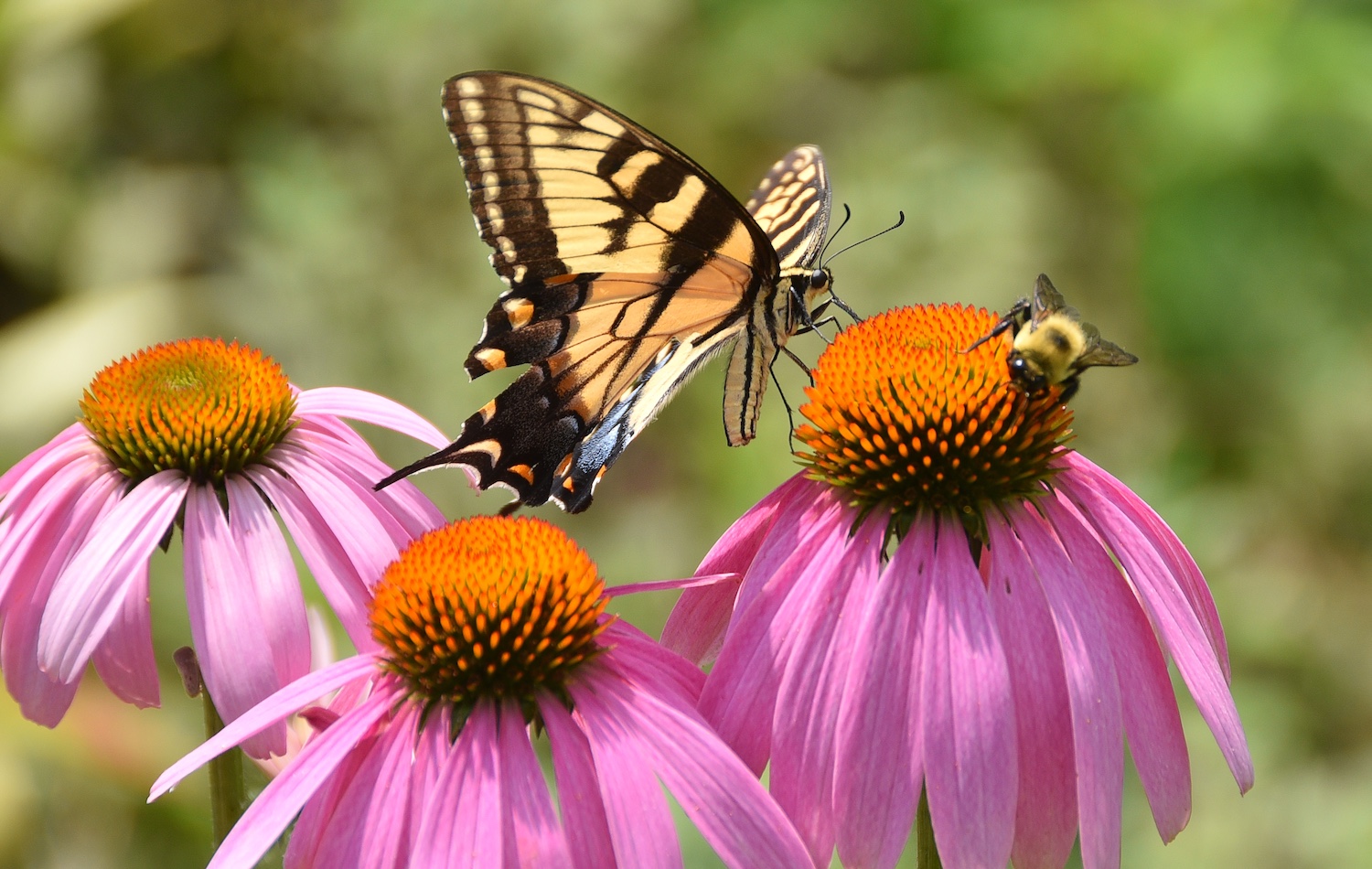
14 min read
The Pollinator Effect: Why You Should Welcome These Winged Wonders into Your Backyard
Posted by The Illuminator
In our interconnected natural world, the pollinator effect plays a crucial role in maintaining the balance and sustainability of ecosystems. From gardens to vast landscapes, pollinators are responsible for the successful reproduction of numerous plant species, making them essential for food production, biodiversity, and overall environmental health.
Having a vibrant and thriving garden is a dream for many homeowners. One way to achieve this is by inviting pollinators into your backyard. In this blog post, we will explore the pollinator effect and why you should welcome these winged wonders. Discover their vital role in the ecosystem and the numerous benefits they bring to your garden.
What is the pollinator effect?
The pollinator effect refers to the process by which pollinators, such as bees, butterflies, birds, bats, and other insects, transfer pollen from the male parts of a flower to the female parts, enabling fertilization and subsequent seed or fruit production. This natural interaction is crucial for the reproduction of many flowering plants, including crops that make up a significant portion of our global food supply.
The importance of pollinators in ecosystems
Pollinators provide invaluable services to ecosystems and humans alike. Their activities contribute to the following:
Biodiversity
Pollinators facilitate the cross-pollination of plants, promoting genetic diversity and enabling adaptation to changing environmental conditions. This diversity is vital for the overall resilience of ecosystems and the survival of various species.
Food production
Pollinators play a vital role in crop production by facilitating the fertilization of fruits, vegetables, and nuts. A significant portion of the world's food supply depends on pollinators, making their role indispensable for sustainable agriculture and food security.
Habitat creation
Many pollinators, such as bees and butterflies, also act as ecosystem engineers, helping in the creation and maintenance of habitats for other organisms. Their activities contribute to the establishment of healthy plant communities, benefiting a wide range of wildlife.
Threats to pollinators and their habitats
Despite their crucial role, pollinators and their habitats face numerous threats, leading to a decline in their populations. Some of the primary challenges include:
Habitat loss and fragmentation
Urbanization, agricultural expansion, and deforestation have led to the destruction and fragmentation of natural habitats, limiting the availability of suitable foraging and nesting areas for pollinators.
Pesticide use
The widespread use of pesticides, including insecticides and herbicides, has detrimental effects on pollinators. These chemicals can directly harm pollinators or indirectly affect them by reducing the availability of their food sources.
Climate change
Alterations in climate patterns, such as shifts in temperature and precipitation, can disrupt the synchronization between flowering plants and their pollinators. This mismatch may have severe consequences for both plant reproduction and pollinator survival.
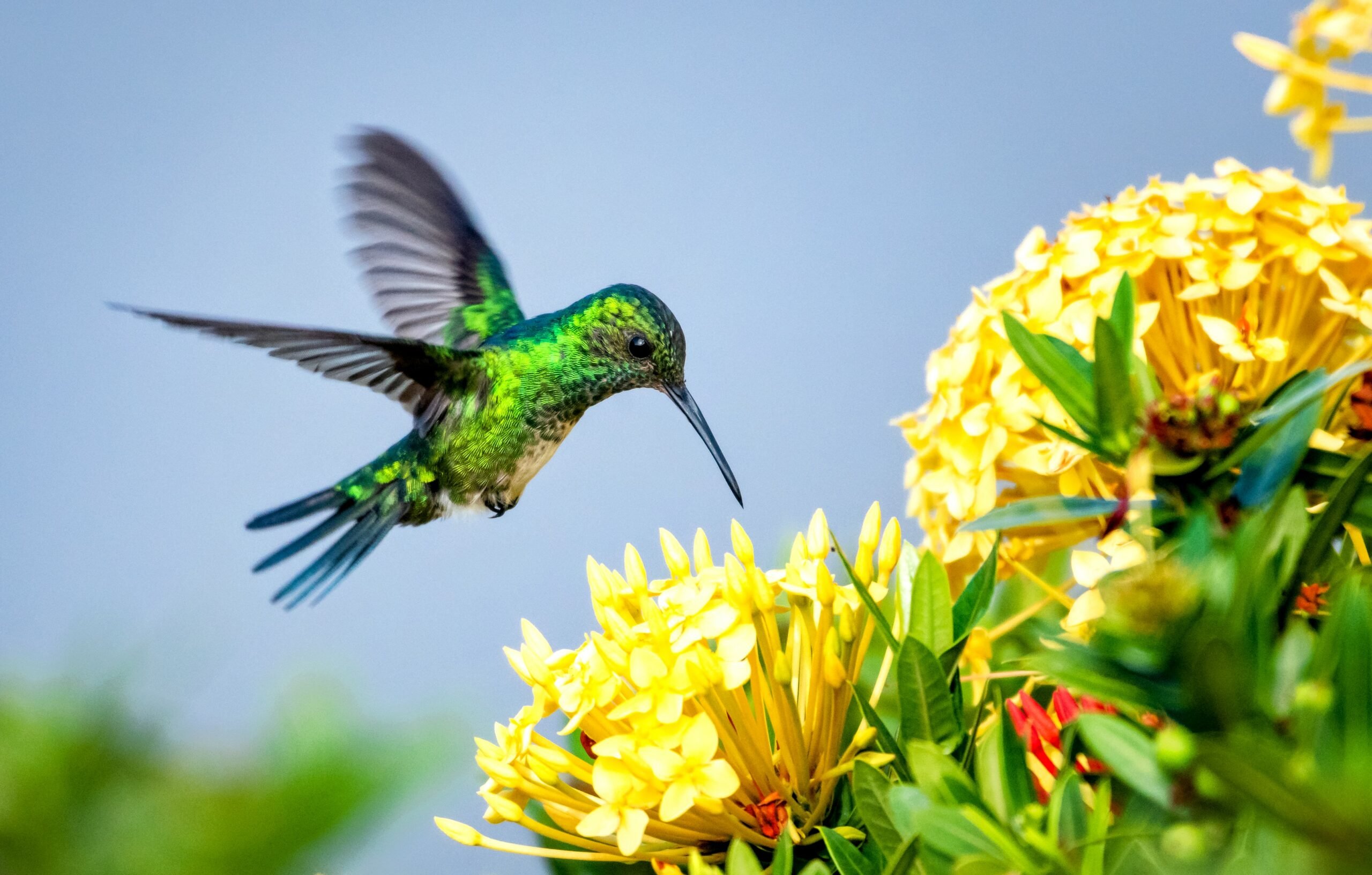
Why are pollinators important for your outdoor spaces?
In the realm of backyard gardening, recognizing the significance of pollinators is paramount. These vital creatures, including bees, butterflies, and hummingbirds, hold the key to unlocking nature's powerhouse and ensuring thriving gardens. Discover the remarkable benefits that pollinators bring to your backyard oasis and how their presence can transform your space into a vibrant haven of life and abundance.
Bountiful Blooms
Harnessing the pollination prowess of bees and other pollinators results in an explosion of blooms. From vibrant flowers to luscious fruits and vegetables, these winged wonders enhance the visual appeal of your backyard, creating a sensory feast for all who visit.
Ecosystem Enrichment
Pollinators play an irreplaceable role in maintaining a healthy ecosystem. By facilitating the reproduction of plant species, they contribute to the biodiversity of your backyard, fostering a balanced environment where wildlife can thrive.
Boosting Harvests
Thanks to pollinators, your garden's productivity soars. Their diligent work ensures proper fruit set and seed production, leading to bountiful harvests of delectable, nutrient-rich produce that you can enjoy with your loved ones.
Natural Pest Control
Embracing pollinators in your backyard inadvertently welcomes natural pest control. Many beneficial insects, attracted by the presence of pollinators, help keep unwanted pests in check, reducing the need for harmful pesticides and fostering a more sustainable gardening approach.
Habitat Preservation
By providing a welcoming habitat for pollinators, you contribute to their conservation and the preservation of their species. Your backyard becomes a sanctuary, offering food sources, nesting sites, and safe havens for these invaluable creatures.
What should you consider to help pollinators thrive in Canada?
In the vast landscapes of Canada, inviting pollinators into your backyard is an essential step towards fostering biodiversity and nurturing a thriving ecosystem. Discover effective strategies and expert tips on how to attract pollinators and transform your outdoor space into a buzzing haven. From native plant selections to providing essential resources, this guide will help you create an irresistible paradise for bees, butterflies, and hummingbirds right in your Canadian backyard.
Native Plant Power
Embrace the Beauty and Attractiveness of Indigenous Flora. Choose native plants that are well adapted to your specific region in Canada. These plants have evolved alongside local pollinators, making them a magnet for bees, butterflies, and other important pollinating species. Opt for varieties such as purple coneflowers, wild bergamot, goldenrod, and bee balm to entice a diverse range of pollinators to your backyard oasis.
Emphasize Blooming Seasons
Ensure a Steady Supply of Nectar and Pollen. Create a blooming sequence by selecting plants that flower at different times throughout the growing season. This strategy guarantees a consistent and reliable food source for pollinators, even as the seasons change. From early spring blooms like crocuses and snowdrops to late-season stunners like asters and sedums, plan your garden to be a year-round buffet for pollinators.
Provide Shelter and Nesting Opportunities
Make Your Backyard an Inviting Habitat. Pollinators need safe havens to rest, seek refuge, and raise their young. Incorporate features like brush piles, rock crevices, or small bee houses to offer shelter and nesting opportunities for bees and other pollinating insects. Provide suitable nesting habitats for solitary bees, such as drilled wooden blocks or hollow stems, ensuring they have a secure place to lay their eggs.
Water for All
Quench the Thirst of Your Winged Visitors. Supply a freshwater source for pollinators to drink and cool off. Consider adding a shallow bird bath or small water dish with rocks or twigs for easy access. Be sure to change the water regularly to prevent mosquito breeding.
Minimize Chemical Use
Promote a Pollinator-Friendly Environment. Avoid or reduce the use of pesticides, herbicides, and chemical fertilizers in your backyard. These substances can harm pollinators and disrupt their natural behaviors. Instead, adopt organic gardening practices and explore natural pest control methods to maintain a healthy balance between your plants and insects.
Be Mindful of Lighting
Create a Safe and Natural Environment. Reduce or eliminate excessive outdoor lighting, especially at night. Bright lights can disorient and disrupt the behavior of nocturnal pollinators such as moths. Use motion sensor lights or install downward-facing fixtures to minimize light pollution and create a more inviting atmosphere for pollinators.

What are the best pollinator-friendly plants in Canada?
When it comes to creating a pollinator-friendly haven in Canada, choosing the right plants is key. By selecting species that attract and sustain pollinators, you can witness the vibrant dance of bees, butterflies, and hummingbirds right in your own backyard. Explore the top plant choices that will entice these vital creatures and transform your outdoor space into a buzzing paradise of biodiversity.
Native Powerhouses
Embrace Indigenous Flora for Maximum Attraction. Opt for native plants that have co-evolved with local pollinators, creating a natural affinity between them. Native species are well-adapted to Canadian climates and provide abundant nectar and pollen sources. Some excellent choices include milkweed, wild bergamot, coneflowers, lupines, and goldenrod. These plants not only captivate pollinators but also add a touch of local beauty to your garden.
Alluring Blooms
Select Flowers That Entice Pollinators. Choose flowers that possess enticing colors, shapes, and fragrances to captivate pollinators. For bees, plants like asters, bee balm, and cosmos are irresistible. Butterflies are particularly attracted to nectar-rich flowers such as butterfly bush, lantana, and zinnias. To mesmerize hummingbirds, include trumpet-shaped blooms like salvia, cardinal flower, and columbine in your garden.
Long-Lasting Blooming Period
Provide a Continuous Food Source. Ensure a steady supply of nectar and pollen throughout the growing season by selecting plants that bloom at different times. This way, pollinators have access to food sources from early spring to late fall. Combine early bloomers like crocuses and snowdrops with mid-season favorites such as coneflowers and phlox, and finish with late-season beauties like sedums and asters.
Herbs for Pollinators
An Edible Delight That Attracts. Don't forget about herbs! Many culinary herbs are not only flavorful additions to your kitchen but also magnets for pollinators. Plant herbs like lavender, sage, oregano, and thyme, which produce aromatic flowers that attract bees and butterflies while providing you with fresh ingredients for your cooking endeavors.
Size and Shape Variety
Cater to Different Pollinators' Preferences. Include plants with different sizes and shapes to accommodate the varied preferences of pollinators. Tall, spiky flowers like foxgloves and delphiniums appeal to hummingbirds, while flat-topped blooms such as yarrow and daisies attract a wide range of bees and butterflies. Providing a diverse selection ensures that you attract a multitude of pollinator species.
Why Water Matters: Understanding the Importance for Pollinators
Pollinators, such as bees, butterflies, and hummingbirds, require water for various purposes in their daily lives. Water is not only essential for hydration but also for maintaining proper bodily functions, cooling off in hot weather, and even constructing nests for certain species. By providing water sources in your garden, you offer a valuable resource that enhances the overall well-being and survival of these important pollinating creatures.
Creating a Water Feeding Station: Tips and Techniques
Choose the Right Container
Select a shallow container or dish that is safe and accessible for pollinators. Opt for materials like ceramic, stone, or plastic, ensuring there are no sharp edges that could cause harm to them.
Add Floating Elements
Place a few small rocks, pebbles, or twigs in the water dish. These floating elements provide perches for pollinators, allowing them to land and safely drink without the risk of drowning.
Keep it Fresh
Regularly change the water in the feeding station to prevent stagnation and the breeding of mosquitoes. Fresh, clean water is more inviting and healthier for pollinators.
Position Strategically
Place the water feeding station in a quiet and sheltered area of your garden. Providing some shade or cover nearby can create a sense of safety and encourage pollinators to visit.
Multiple Stations
Consider setting up multiple water feeding stations throughout your garden, especially if it is large or has different microclimates. This ensures that pollinators can access water easily, no matter where they are in your garden.
Rainwater Harvesting
If possible, collect rainwater in a barrel or container and use it to refill the water-feeding stations. Rainwater is natural and free from any chemicals, making it an ideal water source for pollinators.
Keep it Clean
Regularly clean the water feeding stations to prevent the build-up of dirt, debris, or algae. This ensures that the water remains inviting and safe for pollinators.
Should You Provide Sugar Water to Pollinators? Understanding the Pros and Cons
As garden enthusiasts, we often wonder how we can best support pollinators in our backyard. One popular practice is providing sugar water as an additional food source. While it may seem beneficial, it's important to consider both the advantages and disadvantages before deciding whether to offer sugar water to pollinators. Let's delve into this topic and explore the pros and cons of providing sugar water to these vital creatures.
The Pros of Providing Sugar-Water
Supplemental Nutrition
Sugar-water can serve as a readily available energy source for pollinators, especially during times when nectar-producing flowers are scarce. It can provide a boost of energy for exhausted or struggling individuals.
Attraction and Observation
Offering sugar water can attract diverse pollinators, providing an opportunity for observation and learning. This can be particularly beneficial for educational purposes or for those who enjoy close encounters with these fascinating creatures.
Supporting Weakened Individuals
Sugar water can be beneficial for pollinators that are injured, sick, or experiencing difficulty finding natural food sources. It can aid in their recovery and allow them to regain strength.
The Cons of Providing Sugar-Water
Nutritional Imbalance
Sugar water lacks the complex array of nutrients found in natural nectar. Relying solely on sugar water can lead to imbalances in a pollinator's diet, potentially affecting their overall health and development.
Dependency and Disruption
Regular provision of sugar water may cause pollinators to become dependent on this artificial food source. This can disrupt their natural foraging behavior and potentially reduce their ability to seek diverse and nutritionally rich nectar sources.
Increased Competition and Disease Transmission
Concentrated sugar water can attract a large number of pollinators, leading to increased competition for limited resources. This close proximity can also heighten the risk of disease transmission among individuals.
When considering whether to provide sugar water to pollinators, it's important to weigh the pros and cons. While sugar water can offer temporary relief and attract pollinators for observation, it should not be relied upon as a long-term substitute for natural nectar sources. To best support pollinators, focus on creating a diverse and pollinator-friendly garden filled with native plants that offer abundant nectar and pollen. By providing a healthy and natural habitat, you can ensure the well-being and longevity of these essential creatures in your backyard.
What is the best ratio for sugar-water?
There is no perfect regime when it comes to sugar water concentrations. So let's take a lesson from what beekeepers have learned. One part sugar to one part water is what beekeepers will give their brand-new bees in the spring. It attempts to mimic thin nectar as best as possible. And the other mixture is two parts sugar to one part water, which is a thick syrup used traditionally in the fall. Experiment and see what works best for your outdoors.
Summary - These few simple steps will help your outdoors thrive
Embracing the pollinator effect goes beyond the boundaries of your backyard—it extends to the vast Canadian outdoors and contributes to the preservation of the environment as a whole. By implementing strategies to attract bees, butterflies, and other pollinators, you become a steward of biodiversity, fostering a thriving ecosystem that supports the delicate balance of nature.
In the Canadian outdoors, where expansive landscapes showcase the beauty of nature, welcoming these winged wonders into your garden is a powerful way to make a positive impact. The rich diversity of flora and fauna in Canada provides an ideal habitat for pollinators, and by creating a pollinator-friendly oasis in your backyard, you become part of a broader conservation effort.
As you entice bees with native plant selections like purple coneflowers and wild bergamot or captivate butterflies with the vibrant blooms of milkweed and asters, you not only witness the miraculous dance of pollinators but also play a crucial role in maintaining the web of life. By attracting these winged ambassadors, you facilitate the pollination of plants, ensuring the production of fruits, seeds, and the continued survival of numerous plant species.
Moreover, by embracing the pollinator effect in the Canadian outdoors, you contribute to the resilience of ecosystems that support diverse wildlife. The presence of pollinators attracts a myriad of other beneficial insects, birds, and mammals, creating a harmonious and interconnected web of life. The ripple effect of your actions extends beyond your own garden, enriching the natural landscape and supporting the survival of native species.
So, welcome these winged wonders into your backyard and watch as your garden becomes a haven of pollinator magic. Witness the transformation as bees, butterflies, and other pollinators bring life, color, and vibrancy to your outdoor space. By nurturing their presence, you become an integral part of the greater tapestry of Canadian biodiversity, a guardian of the natural world, and a source of inspiration for others to join in the effort to protect and celebrate these vital creatures.
Embrace the pollinator effect in the Canadian outdoors, and let the symphony of buzzing wings and vibrant blossoms create a legacy of beauty and sustainability for generations to come.
FAQ: Attracting Pollinators in Your Canadian Outdoors
Q1: What are pollinators, and why are they important in Canada?
A1: Pollinators are animals, such as bees, butterflies, birds, and bats, that transfer pollen from the male reproductive parts of flowers to the female reproductive parts, facilitating the fertilization process. In Canada, pollinators play a vital role in maintaining the balance of ecosystems and promoting biodiversity. They are essential for the reproduction of many native plant species, food production for humans and wildlife, and the overall health of natural habitats.
Q2: Why should you take action to attract pollinators in your Canadian outdoors?
A2: Taking action to attract pollinators in your Canadian outdoors has numerous benefits. By providing a habitat that supports pollinators, you contribute to the conservation of native plants and the preservation of biodiversity. Increased pollinator activity enhances fruit and seed production, ensuring a sustainable food supply for wildlife and humans. Moreover, attracting pollinators adds beauty and vibrancy to your outdoor space, creating a harmonious and thriving ecosystem.
Q3: What are the best annual and perennial plants to attract pollinators in Canada?
A3: In Canada, several annual and perennial plants are excellent choices for attracting pollinators. Some popular options include:
Annuals:
Zinnias
Cosmos
Sunflowers
Marigolds
Calendula
Perennials:
Purple coneflowers (Echinacea)
Bee balm (Monarda)
Black-eyed Susans (Rudbeckia)
Lupines
Liatris
These plants offer abundant nectar and pollen, diverse colors and shapes, and are well-adapted to Canadian climates, making them attractive to a wide range of pollinators.
Q4: How can urban areas support pollinators?
A4: Even in limited spaces, urban areas can become havens for pollinators. Create container gardens, vertical gardens, or rooftop green spaces, providing vital food and shelter for these essential creatures.
Q5: Why and how should you provide water to pollinators in Canada?
A5: Providing water to pollinators is crucial for their survival and well-being. In Canada, you can create water sources in your outdoors to quench their thirst. Consider the following tips:
- Place shallow dishes or containers with fresh water in your garden, ensuring a safe landing area.
- Add floating elements like rocks or twigs to provide perches for pollinators while they drink.
- Change the water regularly to prevent stagnation and the breeding of mosquitoes.
Position the water sources in quiet and sheltered areas, preferably with some shade nearby. - Consider setting up multiple water stations throughout your garden, especially in larger or diverse landscapes.
- If possible, collect rainwater in barrels and use it to refill the water stations, providing a natural and chemical-free water source for pollinators.
By providing water, you help sustain the hydration and vitality of pollinators, contributing to their overall health and the success of pollination in your Canadian outdoors.
Remember, creating a pollinator-friendly environment in Canada not only benefits these important creatures but also adds beauty, biodiversity, and resilience to your outdoor space. Take action to attract and support pollinators, and watch as your garden becomes a vibrant haven for these essential contributors to our ecosystems.

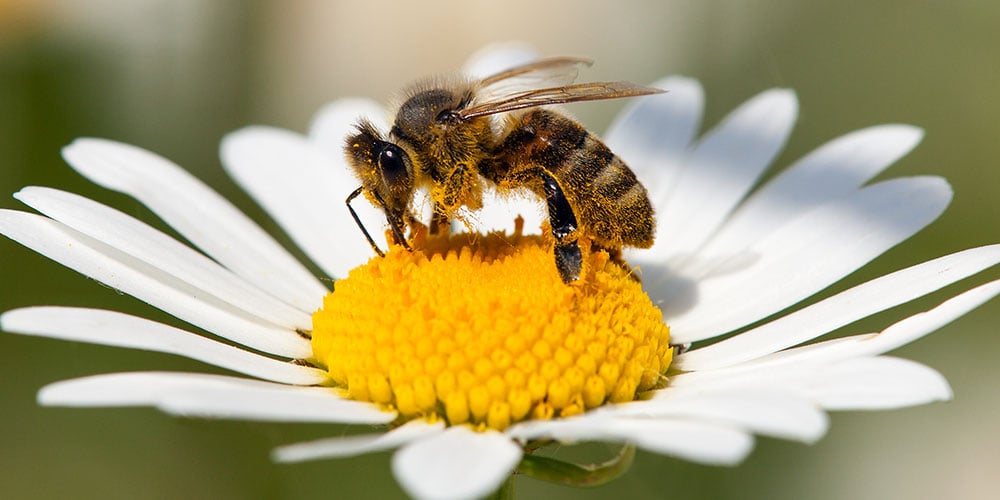
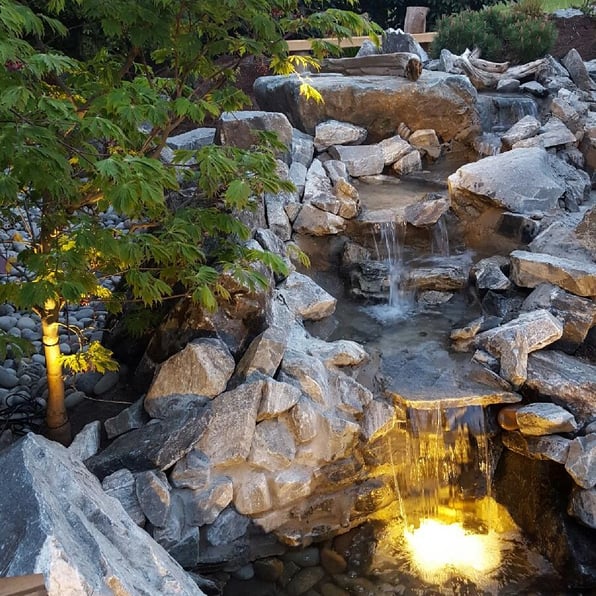
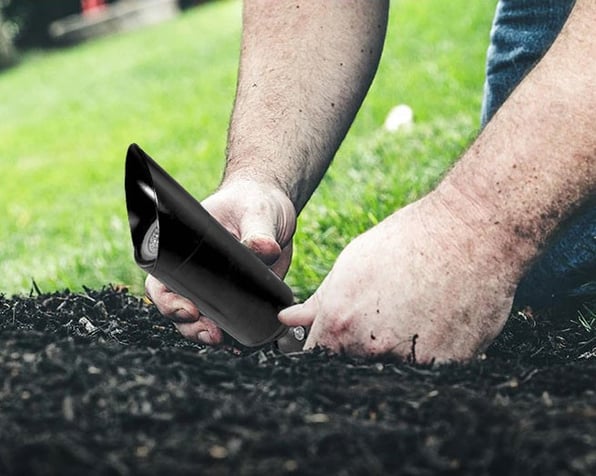
.jpg?width=596&name=ezgif.com-webp-to-jpg%20(2).jpg)